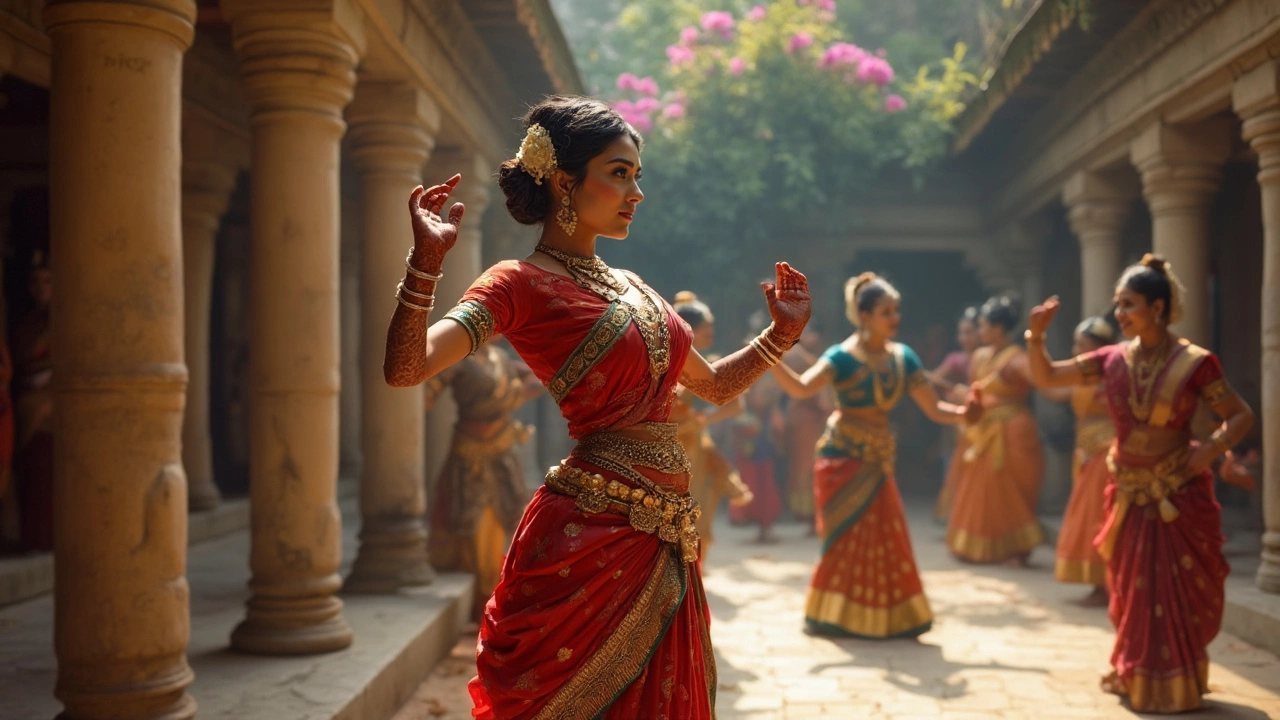Traditional Dance Forms of Tamil Culture: Roots, Rituals, and Revival
When you think of traditional dance forms, performative art rooted in centuries of ritual, community, and spiritual expression. Also known as folk and classical dance traditions, it isn’t just movement—it’s memory in motion. In Tamil Nadu, these dances aren’t staged for tourists; they’re lived. They rise from temple courtyards, village squares, and monsoon-lit nights, carrying stories older than written language. These dances don’t need words because every step, gesture, and rhythm already speaks.
Take Karakattam, a devotional dance where performers balance ornate pots on their heads while dancing to drumbeats. Also known as pot dance, it honors the rain goddess Mariamman. Dancers move in circles, spinning without spilling a drop—symbolizing balance between human effort and divine grace. Then there’s Theru Koothu, a street theatre-dance hybrid performed during temple festivals, where actors embody gods, demons, and heroes with exaggerated masks and loud songs. Also known as village drama, it turns public spaces into open-air stages where morality tales unfold under torchlight. And don’t forget Puliyattam, the tiger dance, where performers paint their bodies yellow and black, move with feral grace, and mimic the hunt to ward off evil spirits. Also known as tiger impersonation, it blends dance, disguise, and devotion into one wild, rhythmic ritual.
These aren’t relics. They’re alive. Young dancers in villages still learn them from grandmothers, not studios. Festivals in Madurai, Thanjavur, and Coimbatore still stop traffic because a dancer in a pot or a tiger mask just walked by. The music? Drums like the thavil and nadaswaram. The costumes? Handwoven silk, beads, and natural pigments. No stage lights, no microphones—just the raw energy of community and belief.
What makes these dances different from classical Bharatanatyam? They’re messier, louder, and more unpredictable. They don’t follow strict codified rules. They adapt. They respond. They’re shaped by harvest cycles, monsoons, and local legends. A Karakattam in one village might honor a different goddess than the next. A Theru Koothu performance in one town could include a scene about modern corruption. That’s the power of folk tradition—it doesn’t stay frozen. It breathes.
Below, you’ll find articles that dig into these dances—how they’re performed, why they matter, and how they’ve survived when so many other traditions faded. You’ll learn how a simple pot on a head can carry a thousand prayers, how a painted face can scare away bad luck, and how rhythm in Tamil Nadu isn’t just heard—it’s felt in the bones.
